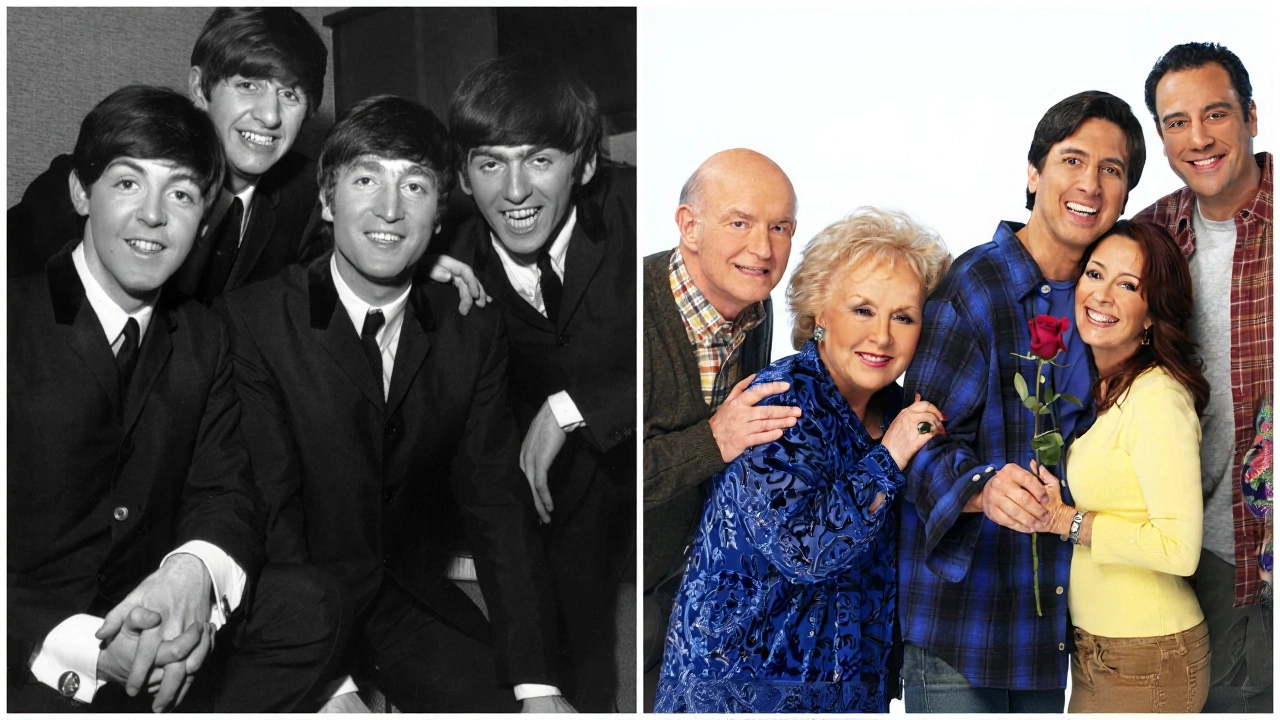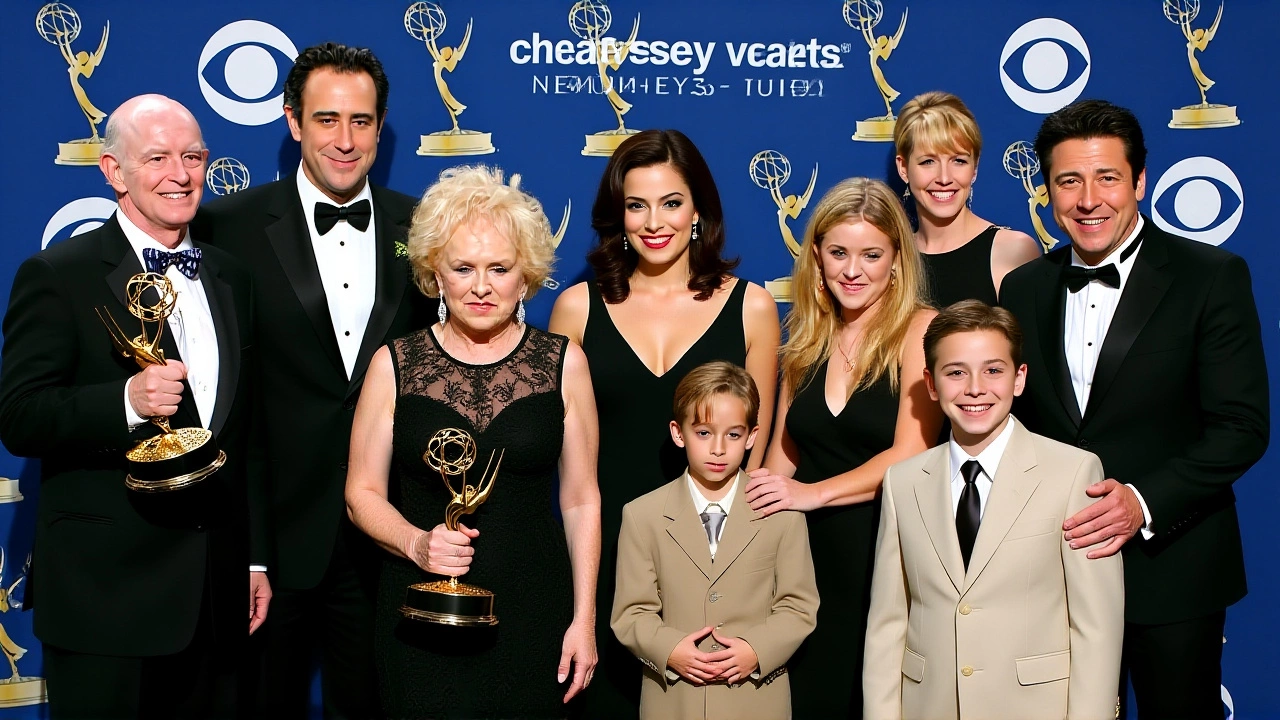John Lennon Was Best Man at 'Everybody Loves Raymond' Star Peter Boyle's Wedding

When Peter Boyle, the beloved actor who brought Frank Barone to life on Everybody Loves Raymond, passed away in 2006, fans remembered his gruff charm and deadpan humor. But few knew the most unexpected chapter of his life: John Lennon, the legendary Beatles icon, stood beside him as best man at his wedding.
The Wedding That Rocked Hollywood’s Quiet Corner
It sounds like a joke someone would make at a Hollywood party. But it’s true. In the mid-to-late 1970s, after meeting his future wife, Loraine Alterman, on the set of Mel Brooks’ Young Frankenstein, Boyle asked one of the most famous men on Earth to be his best man. And Lennon said yes. The wedding itself? Low-key. No fanfare. No cameras. No music from Lennon, despite what some might imagine. "I asked him at the last minute," Boyle told Philadelphia magazine in 2005. "And he said yes. The rest is history." He added, with quiet awe: "He is John Lennon. And everything he does is memorable." That’s the thing about Lennon—he didn’t need to perform. His presence alone turned a quiet civil ceremony into something mythic. No one knew it at the time. Not even the caterer. But decades later, it became one of the most surprising connections between rock history and American television.How a Rolling Stone Writer Connected Two Worlds
The bridge between Boyle and Lennon wasn’t Hollywood—it was journalism. Alterman, a staff writer for Rolling Stone, was close friends with Yoko Ono. That personal link, forged in the creative circles of 1970s New York, opened the door. Boyle, then a rising character actor fresh off his breakout role as the monster in Young Frankenstein, wasn’t a rock star. But he was smart, funny, and unpretentious—the kind of guy Lennon liked. "He wasn’t trying to be famous," Rosenthal recalled during a posthumous panel for Everybody Loves Raymond. "He was just Peter. And Lennon respected that." The wedding likely took place between 1975 and 1978. Boyle and Alterman married after meeting in 1974 during the filming of Young Frankenstein. Lennon was still active in music, living in New York City, and deeply involved in his marriage to Ono. He was also, by all accounts, quietly enjoying a quieter life away from the Beatles’ chaos. This was the Lennon who played piano in the living room, walked his son Sean to school, and said yes to a last-minute best man request from a guy he’d met once at a dinner party.
A Monk, a Rock Star, and a TV Dad
Rosenthal didn’t stop at the Lennon story. He also shared another revelation: Boyle had once studied to become a monk. "I asked him, ‘Why’d you give it up?’" Rosenthal recounted. "And he says, ‘There weren’t enough girls there.’" It’s the kind of line that feels perfectly Peter Boyle—dry, self-deprecating, and oddly profound. He was a man who moved between worlds: religious seminary, avant-garde theater, Hollywood blockbusters, and finally, the living room of every American family watching Everybody Loves Raymond on Tuesday nights. His journey from aspiring monk to Frank Barone—father, husband, and occasional grump—wasn’t linear. But it was authentic. And that’s why Lennon, a man who’d spent his life dismantling illusions, trusted him.Why This Matters Now
This isn’t just a fun trivia fact. It’s a reminder of how interconnected culture really is. Rolling Stone wasn’t just a magazine—it was a hub. New York City in the 1970s wasn’t just a city—it was a collision point for art, music, and comedy. Boyle, Alterman, Ono, and Lennon all moved through the same orbit, often without realizing how their lives would one day be stitched together by history. The fact that this story remained buried for over 30 years speaks to how unassuming Boyle was. He didn’t use Lennon’s name to boost his profile. He didn’t write a memoir about it. He just lived it. And when he did mention it, it was with the same humility he brought to every role.
What Happened After
Lennon was murdered on December 8, 1980, outside the Dakota apartment building in New York City. Boyle went on to star in Everybody Loves Raymond for nine seasons, becoming one of the most recognizable faces on American TV. He died on December 12, 2006, from complications of multiple myeloma and heart disease. Rosenthal’s panel, held sometime after Boyle’s death but before the article’s publication, served as the first public confirmation of the Lennon anecdote. Cast members like Ray Romano, Patricia Heaton, and Maggie Wheeler listened in silence as Rosenthal dropped the bombshell. No one laughed. They just nodded. They knew Peter Boyle. And they knew: if he said it, it was true.Frequently Asked Questions
How did Peter Boyle know John Lennon?
Boyle met Lennon through his wife, Loraine Alterman, a Rolling Stone writer who was close friends with Yoko Ono. They connected socially in New York City during the mid-1970s, after Boyle starred in Young Frankenstein. Their friendship was built on mutual respect, not fame—Boyle was known for his humility, and Lennon appreciated that.
Did John Lennon perform at the wedding?
No. In his 2005 interview with Philadelphia magazine, Boyle explicitly stated Lennon did not sing or play music at the event. His role was strictly as best man—walking beside Boyle, signing the registry, sharing a quiet toast. It was the quiet presence of a legend, not a performance.
When did the wedding take place?
The exact date is unknown, but it occurred between 1975 and 1978, after Boyle and Alterman met on the set of Young Frankenstein in 1974 and before Lennon’s murder in December 1980. The wedding was held in the United States, likely in New York City, where both Boyle and Alterman lived.
Why wasn’t this known until after Boyle’s death?
Boyle never sought attention for the story. He was a private man who didn’t leverage celebrity connections. The revelation only came to light when Phil Rosenthal, creator of Everybody Loves Raymond, shared it during a tribute panel after Boyle’s 2006 passing—nearly 30 years after the wedding.
What was Peter Boyle’s background before acting?
Before becoming an actor, Boyle studied at a seminary with the intention of becoming a Catholic monk. He left the path after deciding there weren’t enough women around—his own humorous explanation, later confirmed by Rosenthal. This period shaped his introspective nature and dry wit, traits that defined his performances.
How did this story impact the legacy of Everybody Loves Raymond?
It added a layer of unexpected depth to Boyle’s character. Fans already loved Frank Barone’s bluster—but learning that the man behind him had shared a quiet moment with John Lennon made him feel even more real. It reminded viewers that behind every iconic TV dad was a full, complex life full of surprising chapters.
